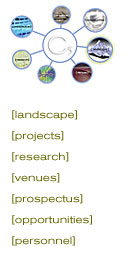 |

|
SoftSub Research
A significant need exists for a new generation of techniques and tools with the ability to automatically
and interactively assist humans in analyzing complex forms of data to discover useful
information. Knowledge discovery and data mining require presumptive notions, inclusive of a "model"
(predictive or descriptive), against which pattern recognition and iterative algorithmic processes
involving machine learning, pattern recognition, statistics, and artificial intelligence are employed.
Although these are well developed disciplines, emergence of knowledge from complex data structures
may also include non-model based strategies.
There is no discrete computer. Broadcast television, radio, and more recently, the Internet have
redefined the notion of "public", necessitating that architectonic views be complemented by the
infomatic. Every computer is a mirror of every other computer and every computer is capable of
emulating any other computer or computer network, but the separation between interiority and
exteriority is arbitrary. Nevertheless, the ontology of organization as system often creates the
semiotic illusion of a distinct computer: what is contained within the plastic shell as commodity.
But every networked computer is by necessity a continuum and must therefore be considered as public.
The primary goals of knowledge representation are prediction and description. Prediction involves sampling unities
(elements) from the domain (database) to predict unknown or future values of other relations (variables) of interest.
Description focuses on finding human-interpretable patterns that illuminate solutions to problems that can be defined
within the domain. In highly complex systems where high degrees of uncertainty are a factor, the techniques of clustering
and nearest neighbor may be employed to reveal multiple ontological assessments of a particular system without determining
its purpose or function. By creating SoftSub, C5 emphasizes the idea of non-causal, non-model knowledge representation.
For further information see: Ontology of Organization as System by Joel Slayton and Geri Wittig |


